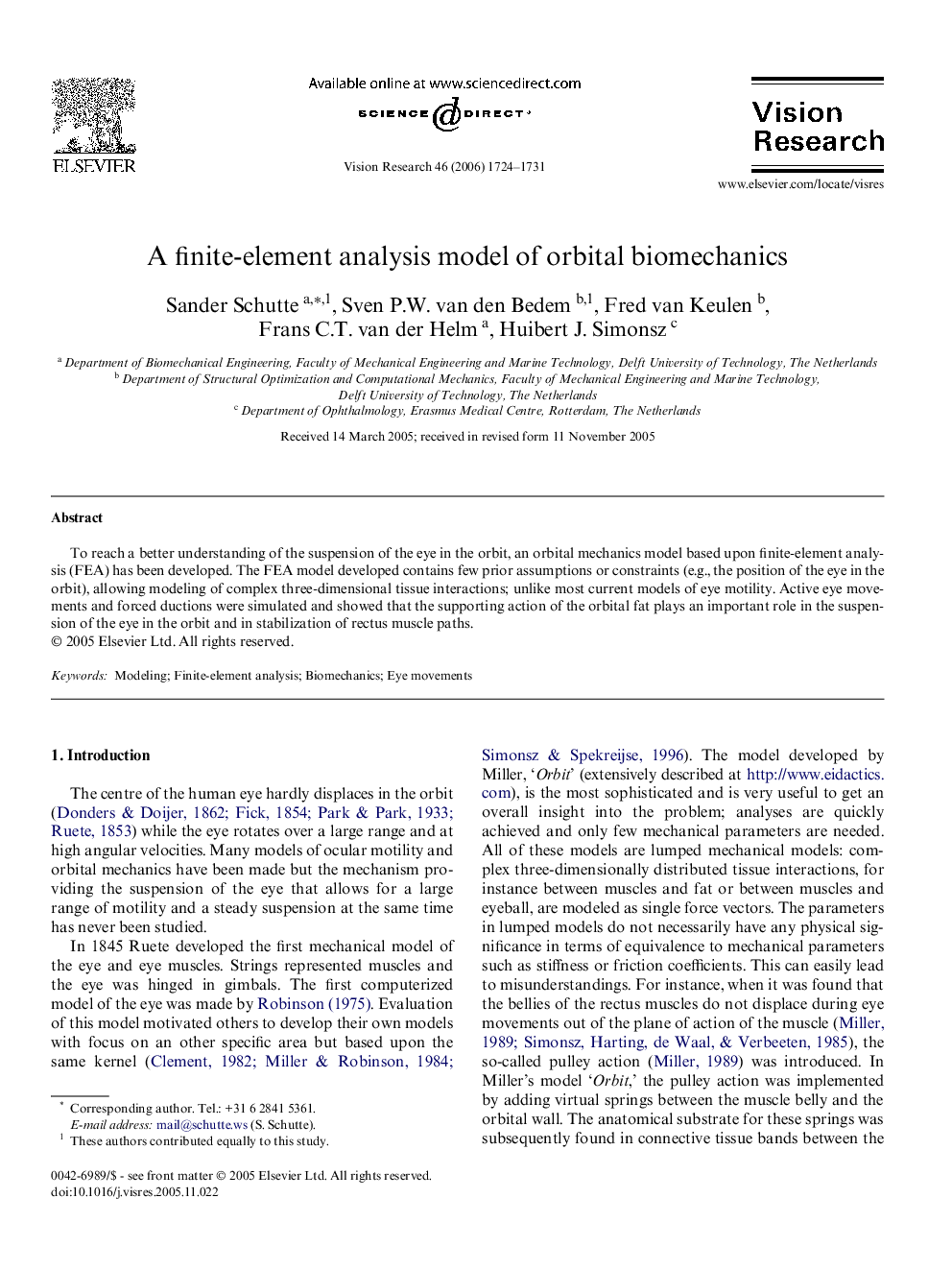| Article ID | Journal | Published Year | Pages | File Type |
|---|---|---|---|---|
| 4036720 | Vision Research | 2006 | 8 Pages |
Abstract
To reach a better understanding of the suspension of the eye in the orbit, an orbital mechanics model based upon finite-element analysis (FEA) has been developed. The FEA model developed contains few prior assumptions or constraints (e.g., the position of the eye in the orbit), allowing modeling of complex three-dimensional tissue interactions; unlike most current models of eye motility. Active eye movements and forced ductions were simulated and showed that the supporting action of the orbital fat plays an important role in the suspension of the eye in the orbit and in stabilization of rectus muscle paths.
Related Topics
Life Sciences
Neuroscience
Sensory Systems
Authors
Sander Schutte, Sven P.W. van den Bedem, Fred van Keulen, Frans C.T. van der Helm, Huibert J. Simonsz,
